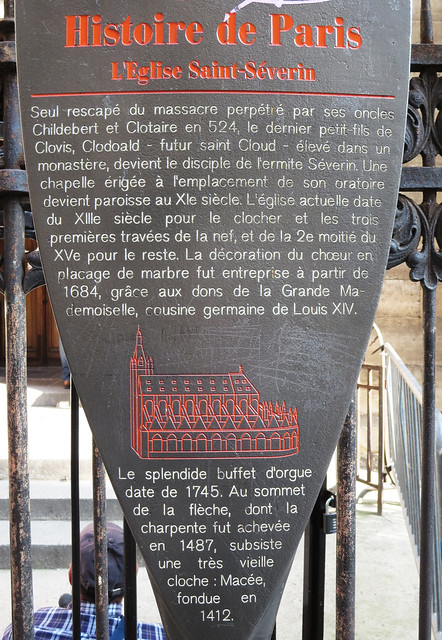L'Eglise Saint-Séverin. Seul rescapé du massacre perpétré par ses oncles Childebert et Clotaire in 524, le dernier petit-fils de Clovis, Clodoald - futur saint Cloud - élevé dans un monastère, devient le disciple de l'ermite Séverin. Une chapelle érigée à l'emplacement de son oratoire devient paroisse au XIe siècle. L'église actuelle date du XIIIe siècle pour le clocher et les trois premières travées de la nef, et de la 2e moitié du XVe pour le reste. La décoration du choeur en placage de marbre fut entreprise à partir de 1684, grâce aux dons de la Grande Mademoiselle, cousine germaine de Louis XIV. Le splendide buffet d'orgue date de 1745. Au sommet de la flèche, dont la charpente fut achevée en 1487, subsiste une très vieille cloche: Macée, fondue en 1412.
Rue des Prêtres Saint-Séverin, Paris
Google Streetview
OpenStreetMap
Subjects
None identified yet. Subjects are curated by hand so please bear with us.

